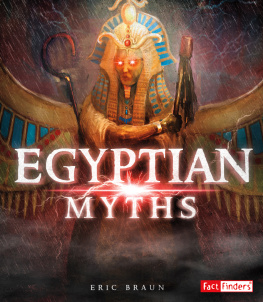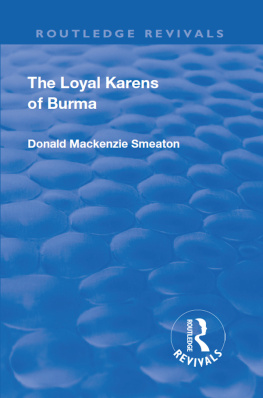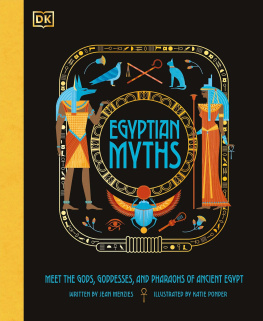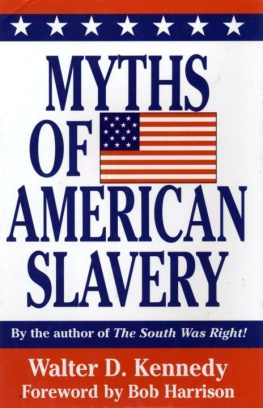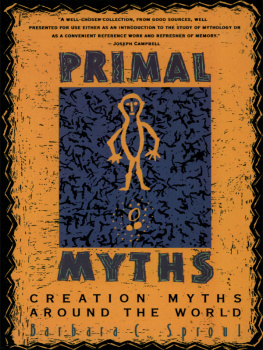Preface
In this volume the myths and legends of ancient Egypt are embraced in a historical narrative which begins with the rise of the great Nilotic civilization and ends with the GrcoRoman Age. The principal deities are dealt with chiefly at the various periods in which they came into prominence, while the legends are so arranged as to throw light on the beliefs and manners and customs of the ancient people. Metrical renderings are given of such of the representative folk songs and poems as can be appreciated at the present day.
Egyptian mythology is of highly complex character, and cannot be considered apart from its racial and historical aspects. The Egyptians were, as a Hebrew prophet has declared, a "mingled people", and this view has been confirmed by recent ethnological research: "the process; of racial fusion begun in the Delta at the dawn of history", says Professor Elliot Smith, "spread through the whole land of Egypt". In localities the early Nilotic inhabitants accepted the religious beliefs of settlers, and fused these with their own. They also clung tenaciously to the crude and primitive tribal beliefs of their remote ancestors, and never abandoned an archaic conception even when they acquired new and more enlightened ideas; they accepted myths literally, and regarded with great sanctity ancient ceremonies and usages. They even showed a tendency to multiply rather than to reduce the number of their gods and goddesses, by symbolizing their attributes. As a result, we find it necessary to deal with a bewildering number of deities and a confused mass of beliefs, many of which are obscure and contradictory. But the average Egyptian was never dismayed by inconsistencies in religious matters: he seemed rather to be fascinated by them. There was, strictly speaking, no orthodox creed in Egypt; each provincial centre had its own distinctive theological system, and the religion of an individual appears to have depended mainly on his habits of life. "The Egyptian", as Professor Wiedemann has said, "never attempted to systematize his conceptions of the different divinities into a homogeneous religion. It is open to us to speak of the religious ideas of the Egyptians, but not of an Egyptian religion."
In our introduction we deal with the divergent character of some of the ancient myths so as to simplify the study of a difficult but extremely fascinating subject. It is shown that one section of the people recognized a Creator like Ptah, who begot himself and "shaped his limbs" ere he fashioned the Universe, while another section perpetuated the idea of a Creatrix who gave birth to all things. At the dawn of history these rival conceptions existed side by side, and they were perpetuated until the end. It is evident, too, that the theologies which were based on these fundamental ideas had undergone, ere the fusion of peoples occurred, a sufficiently prolonged process of separate development to give them a racial, or, at any rate, a geographical significance. As much is suggested by the divergent ideas which obtained regarding the world. One section, for instance, had conceived of land surrounded by skysupporting mountains, peopled by gods and giants, round which the sun ass galloped to escape the night serpent; another section believed that the world was embraced by the "Great Circle",Ocean, and that the Nile flowed from sea to sea; a third conception was of a heavenly and an underground Nile. There were also two Paradises - the Osirian and the Ra (sun god's). Osiris judged men according to their deeds. He was an agricultural deity, and the early system of Egyptian ethics seems to have had its origin in the experiences enshrined in the text: "Whatsoever a man soweth that shall he also reap". Admission to the Paradise of the sun cult was secured, on the other hand, by the repetition of magical formul. Different beliefs obtained also regarding the mummy. In the Book of the Dead it would appear that the preservation of the body was necessary for the continued existence of the soul. Herodotus, however, was informed that after a period of 3000 years the soul returned to animate the dead frame, and this belief in transmigration of souls is illustrated in the AnpuBata story, and is connected with a somewhat similar conception that the soul of a father passed to a son, who thus became "the image of his sire", as Horus was of Osiris, and "husband of his mother".
Of special interest in this connection are the various forms of the archaic chaosegg myth associated with the gods Ptah, Khnm, Seb, Osiris, and Ra. As the European giant hides his soul in the egg, which is within the duck, which is within the fish, which is within the deer and so on, and Bata hides his soul in the blossom, the bull, and the tree ere he becomes "husband of his mother", so does Osiris "hide his essence in the shrine of Amon", while his manifestations include a tree, the Apis bull, the boar, the goose, and the Oxyrhynchus fish. Similarly when Set was slain he became a "roaring serpent", a hippopotamus, a crocodile, or a boar. The souls of Ra, Ptah, and Khnm are in the chaos egg like two of the prominent Hindu and Chinese gods. Other Egyptian deities who are "hidden" include Amon, Sokar, and Neith. This persistent myth, which appears to have been associated with belief in transmigration of souls, may be traced even in Akhenaton's religion. We have "Shu (atmosphere god) in his Aton (sun disk)", and a reference in the famous hymn to the "air of life" in the "egg". There can be little doubt that the Transmigration theory prevailed at certain periods and in certain localities in ancient Egypt, and that the statement made by Herodotus was well founded, despite attempts todiscredit it.
It is shown that the conception of a Creator was associated with that form of earth, air, and water worship which was perpetuated at Memphis, where the presiding Deity was the hammer god Ptah, who resembles the Chinese Panku, Indra of the Aryans, Tarku and Sutekh of Asia Minor, Hercules, Thor, &c. The Creatrix, on the other hand, was more closely associated with lunar, earth, and water worship, and appears to have been the principal Deity of the Mediterranean race which spread into Asia Minor and Europe. In Scotland, for instance, as we show, she is called Cailleach Bheur, and, like other archaic tribal deities and ghosts, she was the enemy of mankind. Similarly the Egyptian goddesses Sekhet and Hathor were destroyers, and Tefnut was goddess of plagues. Even the sun god Ra "produced calamity after thy (Osiris's) heart", as one of the late temple chants puts it.
In the chapter dealing with animal worship the racial aspect of early beliefs, which were connected with fixed and definite ceremonies, is illustrated in the HorusSet myth. The "black pig" was Set (the devil) in Egypt, pork was "taboo", and the swineherd was regarded as "an abomination", and not allowed to enter temples. The Gauls and Achans, on the other hand, honoured the swineherd and ate pork freely, while in the Teutonic Valhal and the Celtic (Irish) Paradise, swine's flesh was the reward of heroes. In Scotland, however, the ancient prejudice against pork exists in localities even at the present day, and the devil is the "black pig". Professor Sir John Rhys, in his



